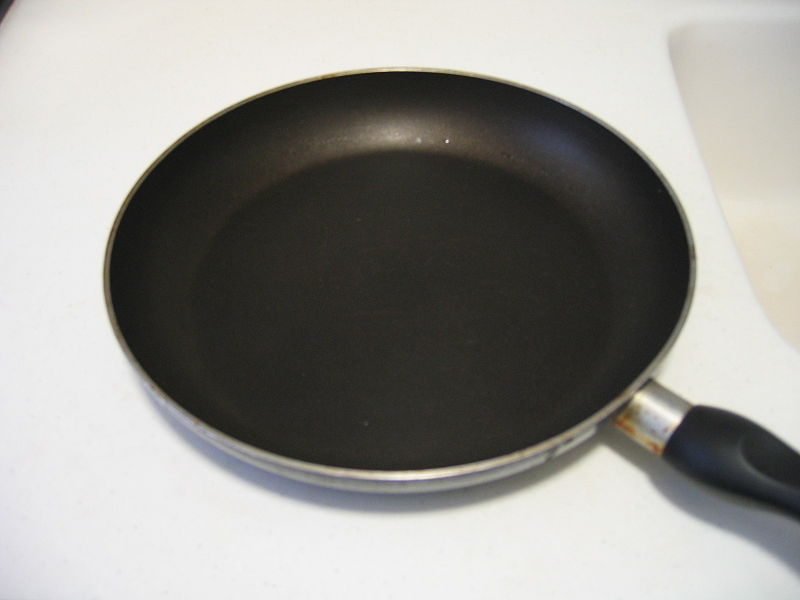 |
| A Teflon coated frying pan Photo by Wilfred Pau |
Teflon® was invented by DuPont in the mid-20th century
as a plastic fluorocarbon
in resin that is applied to surfaces that are usually metal under an extremely
high heat forming a nonstick coating. This is commonly found in using Teflon®
coated pots and pans.
The original
formulation has been greatly improved and has been marketed under several
different names. During the 1980s Teflon® eventually evolved after several
different variations into a product called Silverstone®. The big advantage is
Silverstone it forms a more durable coating on pots and pans and other surfaces
than the original Teflon. Both of these products are DuPont registered
trademarks.
The first thing
you have to do after bringing your new pot home from the store and before its
first use is to properly condition it for use. This is done by wiping the
Teflon coating with shortening. Never use any metal stirring forks or spoon's
for mixing, nor cut anything up in the pan using a knife. It is not advisable
to use any form of abrasives, scouring powders, metal pads or anything else
that may damage the surface of the Teflon.
When you wash
the Teflon coated pan you should do it with hot sudsy water to avoid staining.
One of the things that you should not do is to let a Teflon coated pan sit overnight
filled with water, this will damage the finish. You can wash pots and pans that
have been coated with Teflon in the dishwasher without suffering any damage to
the coating.
The most
damaging thing to Teflon coating is to allow the charring of any food grease
residues in the pan this causes dark-colored staining caused by overheating or
incomplete cleaning. If this happens it can lower the effectiveness of its
nonstick properties.
Under the right
conditions the nonstick surface in your pots and pans can be renewed by
removing any stains. This is done by adding 2 tablespoons of baking soda and
1/2 cup of liquid bleach with 2 cups of water. This will usually give you
enough liquid to fill half the pan. Allow the solution to simmer in the pan for
about five minutes. Remove it from the heat and check the Teflon surface, if
the stain still is there you must repeat the treatment.
There is a
caution doing this however; is the solution oils that will form foam and if
this boils over it will usually stain the outside of the pan. The other thing
to take into consideration is the fact that the solution is a very strong
oxidizing agent that will cause some change in the Teflon coating with dark
colors becoming lighter. This bleaching action however does not affect the
nonstick properties of the Teflon.
Never substitute
other ingredients for the baking soda, bleach or water. After you have cleaned
your pan wipe it down with vegetable oil to recondition the surface of the
Teflon before using it again. If you see any white spotted film that appears on
the Teflon surface wipe it off with a soft cloth that is been saturated with
lemon juice or vinegar by rubbing over the surface of the Teflon. After you're
wiped off the pan wash and dry it, and condition it the same way you did when
it was new.
Teflon® coatings
that wear off can never be repaired at home. They have to be recoated using a
very high temperature, which is not economical for the homemaker to attempt.
References:
Plastic
Fluorocarbon FAQ, http://www.doityourself.com/stry/PTFE
Teflon®
and Silverstone®
are registered trademarks of DuPont.

No comments:
Post a Comment